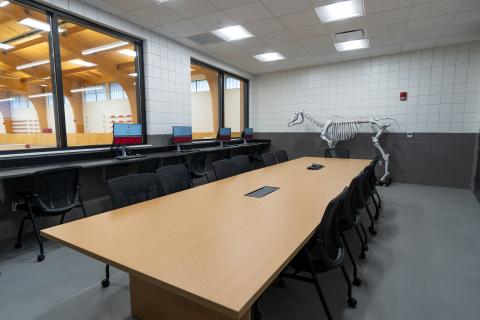Equine Performance Evaluation Arena Enhances Clinical Care
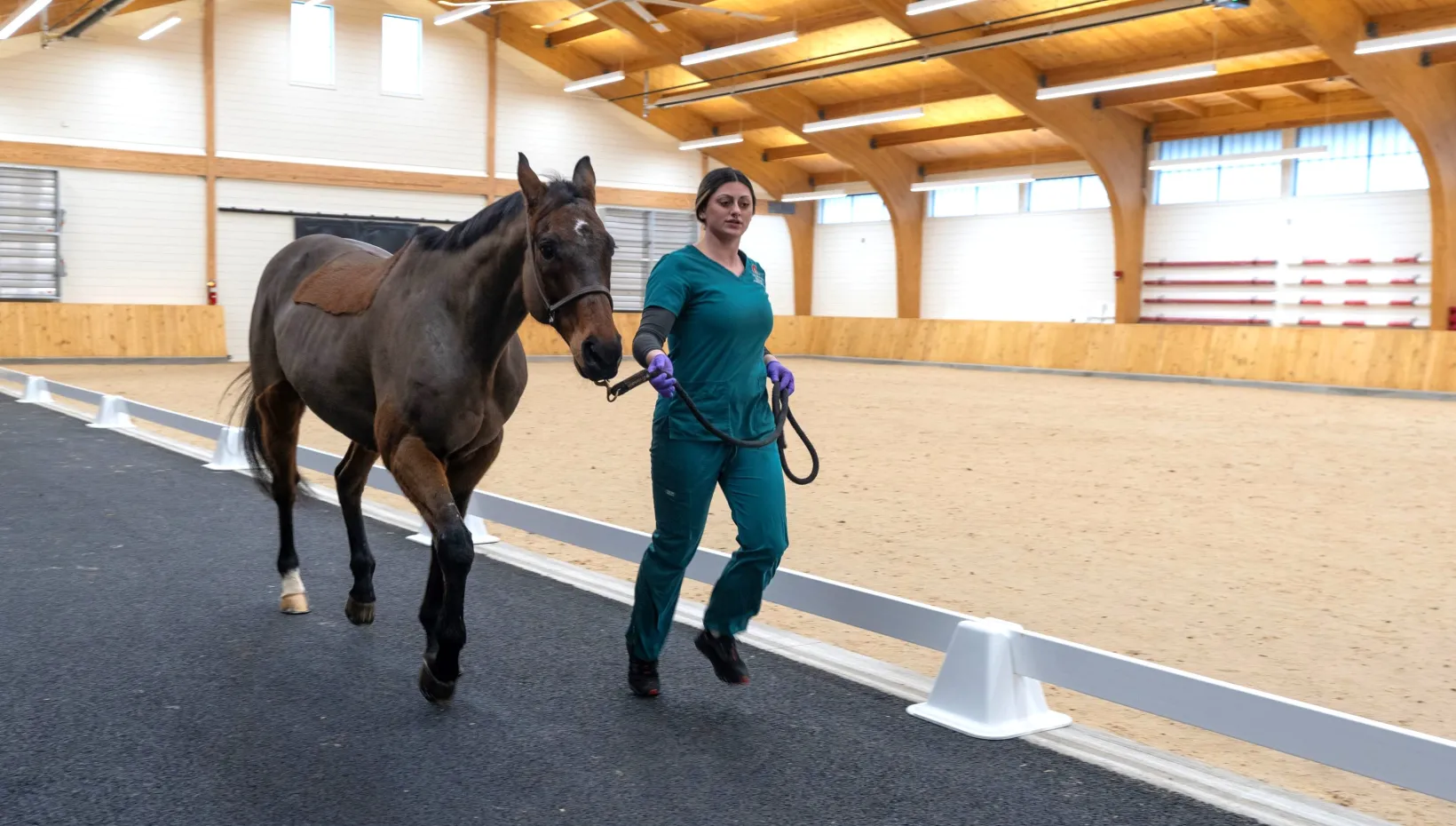
Article by: Debbie Wakefield
Originally Published
Learn how the college is elevating the care and support of equine athletes.
The Ralph Rogan Equine Performance Evaluation Arena, connected to The Ohio State University Veterinary Medical Center’s Galbreath Equine Center, will ensure horses in the Midwest receive world-class compassionate care.
To best diagnose lameness, the new space offers multiple areas for clinicians to evaluate the gait of horses both in hand and under tack. The variety of surfaces will help clinicians pinpoint changes in horses’ gaits and identify which limbs are sore.
Unique features of the arena
Despite it being called an arena, horse enthusiasts will notice that this 12,000-square-foot space is not your typical riding arena.
The arena's footing is crafted from a no-dust, specialized synthetic sand-like material. This shallow, high-end footing provides traction, stability and cushion that should be familiar to most horses competing in shows.
“We want to see the horses perform on a surface they have seen before and a surface where their issue will be evident,” said Maureen Kelleher, DVM, DACVS, DACVSMR, associate professor of equine sports medicine and surgery.
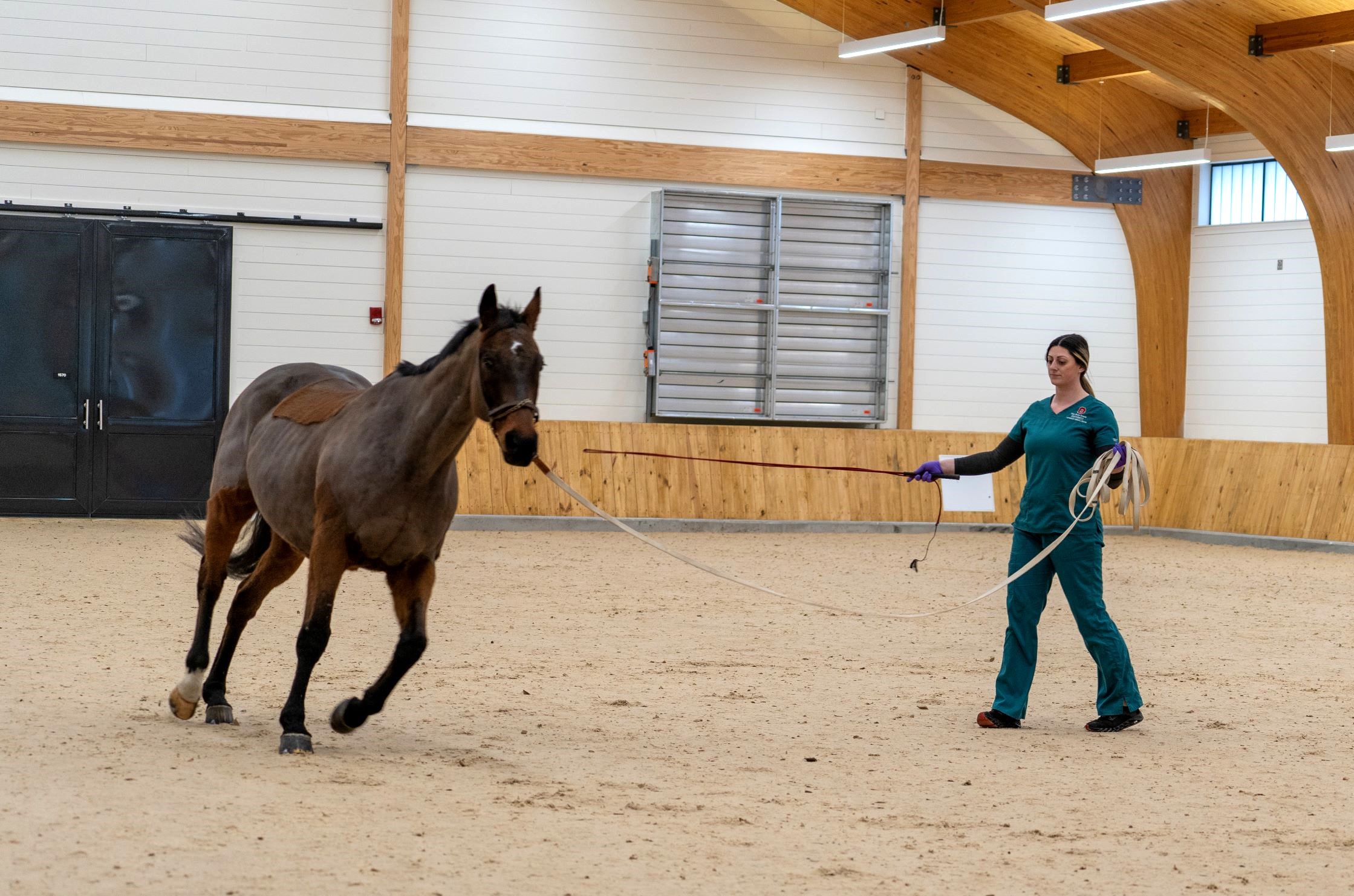
To the side, the arena features a jogging strip made of a specially designed non-slip asphalt material. The jogging strip is separated by white dressage fencing, creating a clear sight line for riders.
“We’re excited that this all-weather, year-round, and multi-surface space offers opportunities to conduct comprehensive evaluation, diagnosis, and treatment of the performance horse,” says Roger Fingland, DVM, MS, MBA, DACVS, executive associate dean, and executive director and chief medical officer of the veterinary health system. “The arena’s expansive capabilities will provide students and residents an opportunity to learn diagnostic and treatment techniques in a dedicated space.”
The arena's lighting is diffused and specially created to minimize shadows and create better visualization.
“It’s so bright in here,” said Mallory Carnes, RVT, assistant director of large animal patient care. “Unlike most arenas, there’s no dark corners or shadows.”
Under saddle evaluations for better diagnosis
This space will allow clinicians to observe horses riding under saddle, even jumping over cross-rails and jump poles.
“For me to diagnose a horse, to see something subtle that’s affecting their performance, I need more room to gather information,” said Dr. Kelleher. “If a show jumping horse is refusing jumps, I need to see that horse jump in order to pinpoint the problem.”
Dr. Kelleher described the importance of seeing the horse in multiple environments, such as on hard footing, soft footing, under a weighted pad and under saddle. This provides her with more data, which allows her to better diagnose the horse without requiring invasive diagnostics.
A veterinary assistant will be able to ride the horse if needed. Owners can bring their own saddle, bridle and riding gear to tack up their horse in the barn.
“This arena allows us to replicate what the client and patient are experiencing. They can use their own tack, ride their horse and show the doctor what they’ve been feeling,” Carnes said.
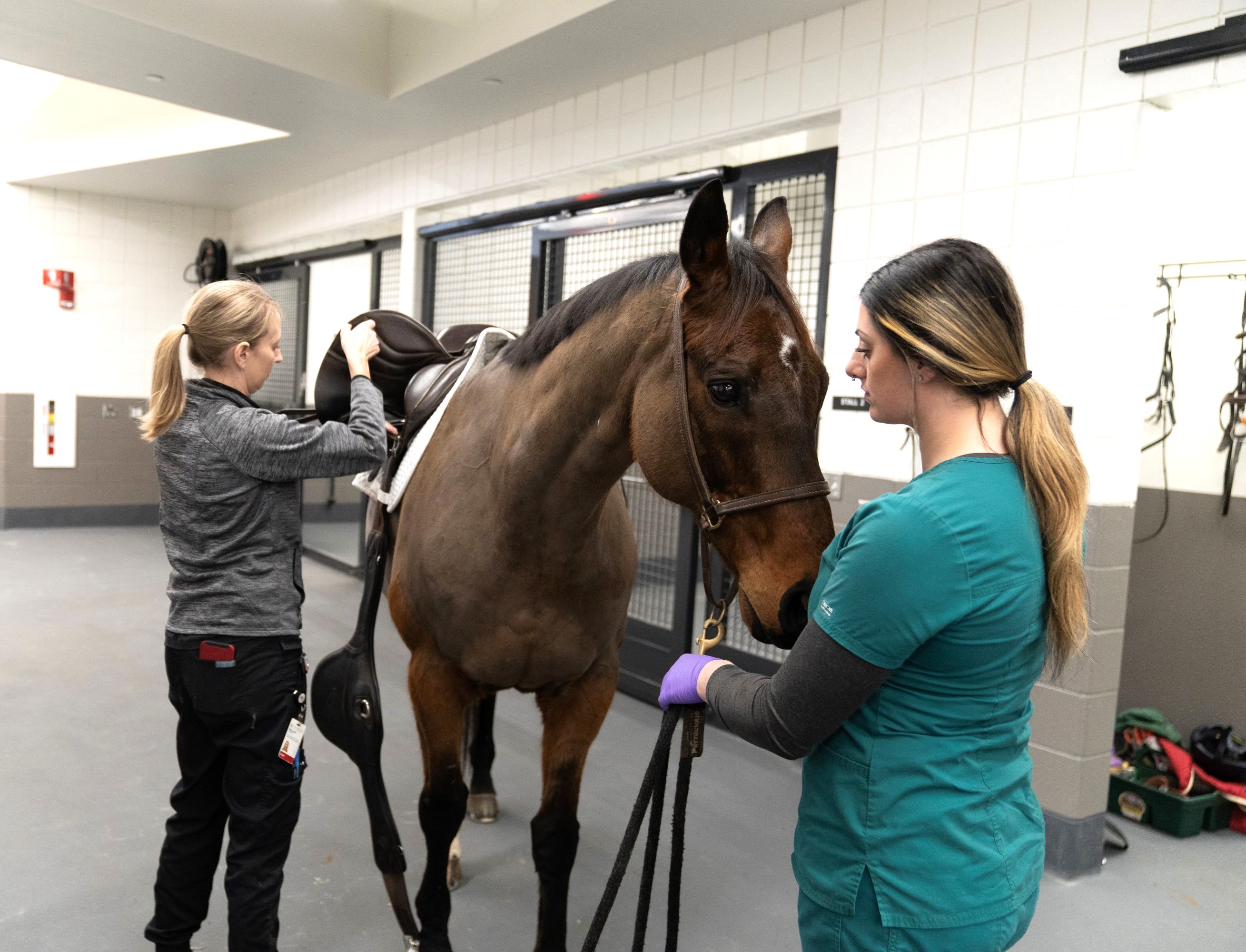
The arena features two stalls for day use so horses can comfortably rest before and after their evaluation.
Clients can observe the evaluation of their horse thanks to a special open-air observation area in the arena.
Collaboration in the new space
The Sports Medicine and Surgery Service will continue collaborating frequently with the Internal Medicine, Diagnostic Imaging, Cardiology and Farrier services at the Veterinary Medical Center.
“With the arena, we’re able to do dynamic upper airway scopes where the horse is ridden with the scope, and our team can evaluate while under saddle,” said Carnes.
In addition to the arena, the new space also features two rooms that will be used interchangeably for radiology and ultrasound.
Rustin Moore, DVM, PhD, DACVS, dean of Ohio State’s College of Veterinary Medicine, says the facility’s on-site diagnostic imaging capabilities make it a strong component of the Veterinary Medical Center’s state-of-the-art equine sports medicine program. “Clinicians won’t need to wait to bring them to the other part of the hospital.”
Outside the arena is a neurology hill that will be used by the internal medicine and neurology teams for neurological evaluations later this year.
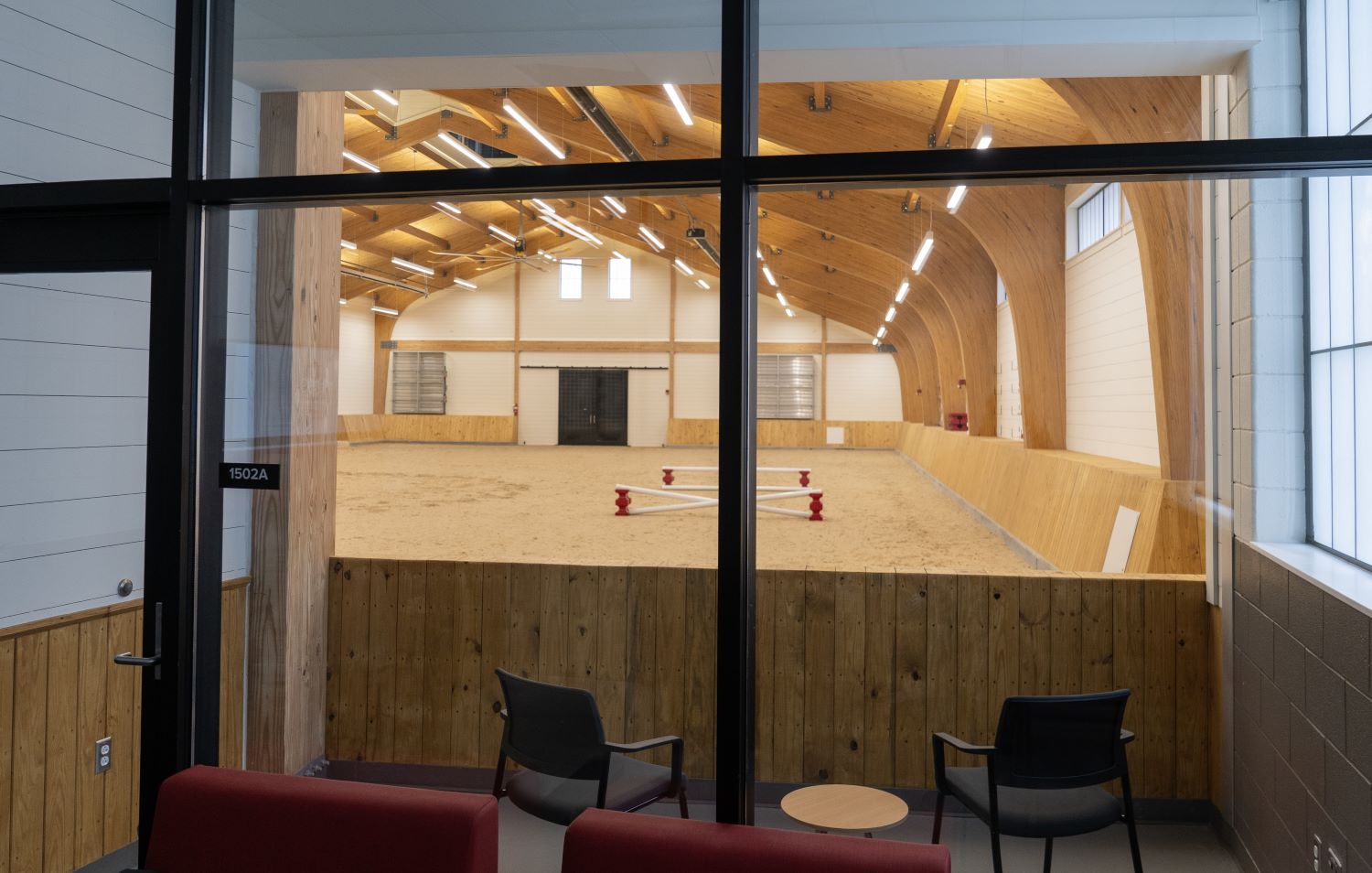
Expansion of sports medicine service
The field of equine sports medicine is expanding, with more decisions being rooted in research and education and more specialists entering the field.
“Every horse has an athletic job to do, and any owner who feels their horse isn’t performing to its full capacity or achieving its goals could benefit from the sports medicine service,” said Dr. Kelleher.
Lameness is one of the most common causes of performance problems in equine athletes, and it can often be effectively diagnosed and treated through progressive equine sports medicine.
Carnes emphasizes that having this arena is a turning point for the sports medicine service. “We’re expanding on the already great work that’s being done.”
When a horse comes in for an evaluation, clinicians will first evaluate the horse in a standing position. In this non-dynamic evaluation, they look from head to toe for swelling, heat or a pain response. Next is a dynamic evaluation, involving the horse walking, trotting, cantering, and moving in a circle in both directions. The horse can be ridden, jumped, practice dressage moves or work on a long line. This will allow the clinicians to see how the horse is compensating.
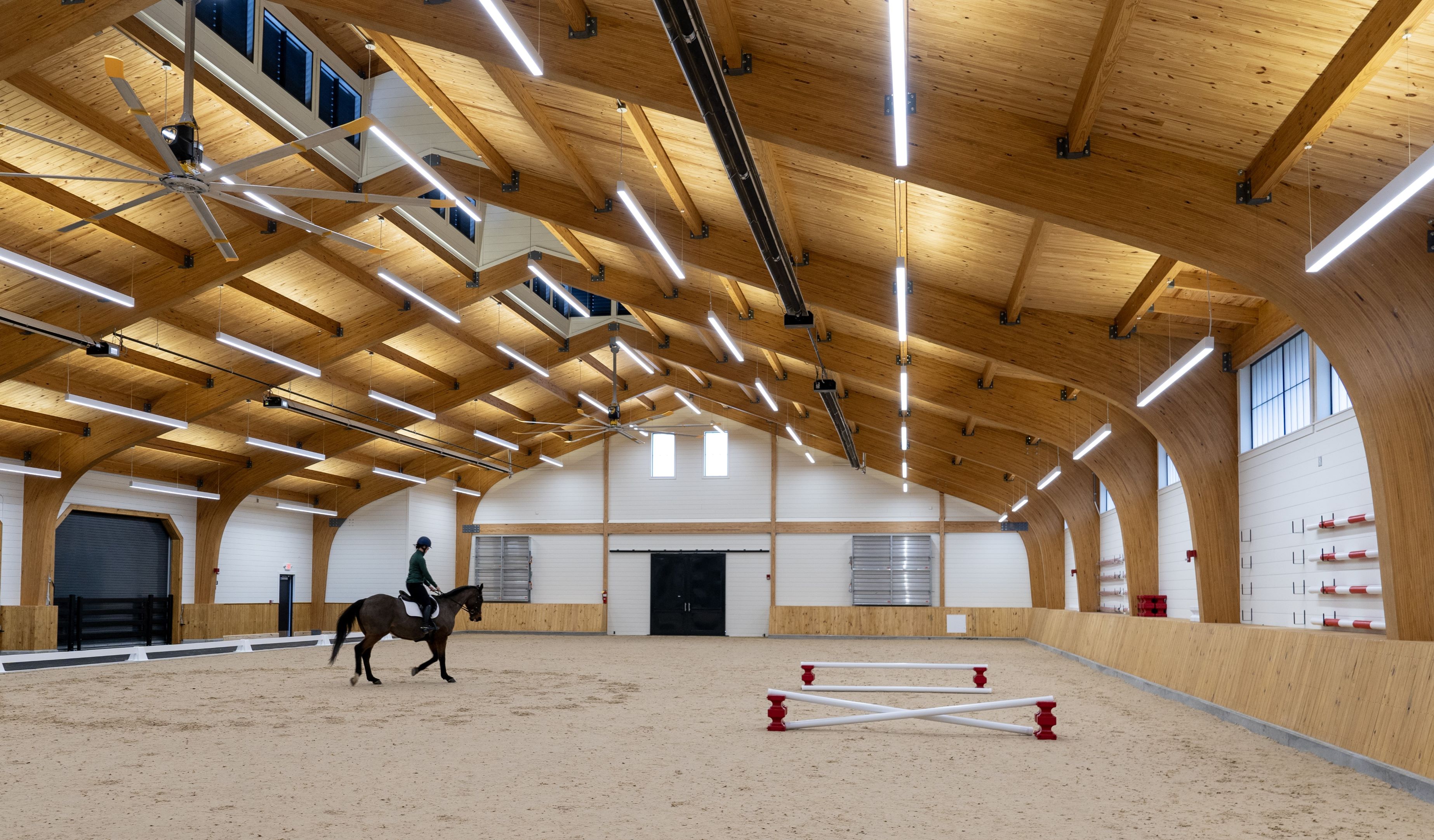
Improving lameness evaluations
The previous process of evaluating a horse’s gait was typically done in the barn breezeway, which wasn’t ideal.
“This was very limiting. I could only observe the horse on a hard asphalt surface, different from their usual arena,” said Dr. Kelleher. “There was only room to trot the horse by hand and do a very tight circle with the horse.”
Dr. Kelleher often had to rely on owners showing her videos of the horse under saddle, which she said was not as reliable as her being able to see the horse move in person.
“The indoor arena is an environment horses are more familiar with. In contrast, the hospital breezeway could make horses nervous with its odd smells and unfamiliar noises,” she added.
Carnes agreed that this arena presents a much more controlled observation environment with fewer distractions and opportunities for a horse to spook.
“The breezeway was dark and had glares and harsh shadows that made it difficult for clinicians to properly observe the horses,” said Carnes.
The future is bright
From the 4-H pony to the million-dollar racehorse, the new Ralph Rogan Equine Performance Evaluation Arena will ensure all equine patients reach their greatest potential and lead long, healthy lives.
The arena honors Ralph Rogan, an American Saddlebred Horse enthusiast who spent over 30 years as an executive at Procter and Gamble. The construction was made possible by the generosity of a dear friend and longtime client of the Veterinary Medical Center who wishes to remain anonymous.
